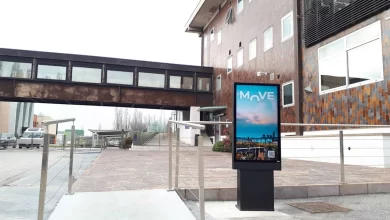
Recent cyberattacks have made some points clear, and among them are implementation of Zero Trust becoming compulsory. It is anything unlike perimeter-based security, which thus makes it hard for a potential attacker to go through internal core systems.
What zero trust does is that it assumes hackers are already inside the network and works on the ‘Trust no one model, hence it takes it down in an instant.
What are the impact of security breaches on numerous internet networks?
It was earlier in 2021 that an attack (which appeared to be the largest of its kind) on an American energy firm took place. A group of hackers breached the network of the ‘Colonial Pipeline’ using a leaked password they discovered on the dark web.
Using that compromised password, the hackers were able to surf through the network of the pipeline.
This led to a total shutdown of the whole pipeline, resulting in large-scale fuel shortages across the entire eastern coast of the United States of America.
Hackers stole almost 100GB of Colonial Pipeline’s data and the Russian-based group of hackers, known as DarkSide, got a ransom of USD$ 4.4 million after they threatened to leak such information.
What to understand about the Pysa ransomware organization?
Lorance Abraham once wrote an article. There he explained the way Pysa ransomware organization used a simple PowerShell script to obtain the needed information they were looking for after obtaining control of a company’s domain controller.
Once a hacker obtains control of a domain controller, the game is hence over for the organization. From this point, what a hacker needs is an easy PowerShell script interview to look for files related to the company’s financial information, banking information plus credentials, and insurance policies.
If organizations have one then hackers will assume that they will pay the ransom.
What to understand about traditional network architecture?
A traditional network architecture, as explained by experts from a DDoS Protection Service company in London, United Kingdom, is a perimeter-based network. Though it is widely used, it somehow just cannot prevent hackers from accessing any company’s sensitive data or obtaining control of crucial and key systems.
Up until now, VPN Solutions were used in securing network communications as well as preventing untrustworthy access to sensitive data.
However, despite the capabilities of securing communication channels via the usage of data encryptions, VPNs are helpless when it comes to preventing security breaches once attackers obtain credentials of a network.
Security leaders across most organizations understand that now Zero Trust has become the topmost cyber security priority due to the recent upsurge in cyber attacks.
Almost 96% of security decision-makers who were participants in Microsoft’s Zero Trust Adaptation Report of 2021 state that Zero Trust is key to the success of their firms.
Of that, 76% of them are in the process of implementation whereas 73% expect their budget for Zero Trust implementation to rise.
Some concepts of Zero Trust architecture
Here are some concepts of Zero Trust Architecture:
• It works on the principle that each component in the network is not trustworthy by default, whether on the inside or on the outside. For achieving trust, multi-level authentication is need. Only a select group of users get the privileges.
• Since each user and each request is check and authorize individually, even if attackers do gain access to premises of enterprises or even hack into a system, they won’t be allow to get any further information for free (including control).
• The control panel is where all the decisions regarding authorizations take place for each access
request in the network, plus for all users and devices on it as well.
• A security or access policy is apply at that stage. Based on a person’s function within the firm, time, date or even by the kind of device (even if an employee tries connecting a resource from their personal smartphone),
they will still need to provide explicitly unique authentication which only the user knows about.
• This hence eliminates the need for a hacker to obtain access whether or not the smartphone is compromise.
• In case a request to a resource is allow by the control panel,
it automatically sets permissions to accept traffic from that client to that very specific resource.
• The control panel can also instruct network entities for encryption details of such a request.




